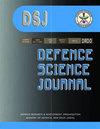砂浆几何变化后筒体力学性能的研究
IF 0.8
4区 工程技术
Q3 MULTIDISCIPLINARY SCIENCES
引用次数: 0
摘要
120毫米迫击炮枪口附近的区域由梯形螺纹组成。为了让120毫米迫击炮击中目标,目标的瞄准是借助这些梯形螺纹给出所需的角度。由于以这种方式设置目标需要花费大量时间,因此我们的目标是开发一种液压机构,通过提升梯形螺纹自动为系统提供角度,而不是机械地设置角度,以便在最短时间内轻松调整。因此,它旨在将砂浆转换为一个全自动系统,该系统可以围绕自己旋转360°,并可以在短时间内非常精确地调整到所需的角度。本研究分两步进行。首先,利用ANSYS Workbench有限元方法,对目前使用的120mm螺纹砂浆在烧制过程中的应力进行了热力学分析。然后,在相同应力的作用下,在ANSYS Workbench程序中检查去除螺纹后砂浆的状态,并比较两种砂浆的结果,检查去除螺纹是否安全。本文章由计算机程序翻译,如有差异,请以英文原文为准。
Investigation of the Mechanical Properties of the Barrel After Geometric Changes on the Mortar
The area close to the firing part as of the muzzle of a 120 mm mortar consists of trapezoidal threads. In order for the 120 mm mortar to hit the target, the target is aimed by giving the required angle with the help of these trapezoidal screw threads. Since it takes a lot of time to set the target in this way, the aim is to develop a hydraulic mechanism that automatically gives an angle to the system by lifting the trapezoidal screw threads instead of mechanically setting the angle to be adjusted easily in the shortest time. Thus, it is intended to convert the mortar into a full-automatic system that can rotate 360° around itself and can be adjusted to the desired angle in a short time and very precisely. The present study is conducted in two steps. At first, thermo-mechanical analyzes for the stresses affecting during firing of the currently used 120 mm mortar with a screw thread were investigated by ANSYS Workbench finite elements method. Then, the status of the mortar after removing the screw threads was examined in the ANSYS Workbench program under the effect of the same stresses and the results were compared between the two mortars and it was examined whether it is safe to remove the screw threads.
求助全文
通过发布文献求助,成功后即可免费获取论文全文。
去求助
来源期刊

Defence Science Journal
综合性期刊-综合性期刊
CiteScore
1.80
自引率
11.10%
发文量
69
审稿时长
7.5 months
期刊介绍:
Defence Science Journal is a peer-reviewed, multidisciplinary research journal in the area of defence science and technology. Journal feature recent progresses made in the field of defence/military support system and new findings/breakthroughs, etc. Major subject fields covered include: aeronautics, armaments, combat vehicles and engineering, biomedical sciences, computer sciences, electronics, material sciences, missiles, naval systems, etc.
 求助内容:
求助内容: 应助结果提醒方式:
应助结果提醒方式:


